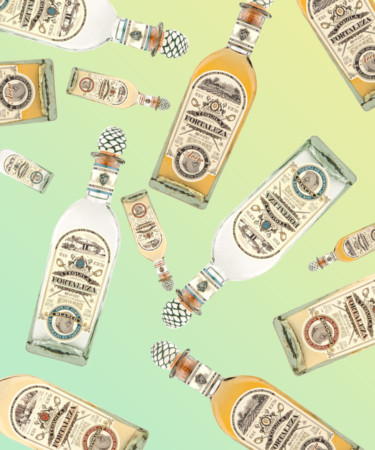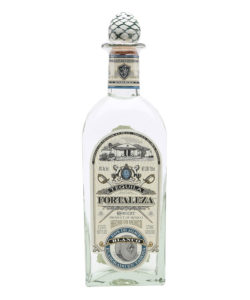A darling of bartenders and industry professionals across the country, Tequila Fortaleza offers a traditional portfolio made using ancestral methods, ranging from affordable blanco to añejo that has been aged between 18 and 24 months. Using a boiler from 1903 and copper stills from the 1940s, Fortaleza encompasses generations of skill and technique to express pure and authentic agave-flavored tequila. We’re fans at VinePair as well, having placed Fortaleza Blanco on the lists of 50 Top Spirits of 2020 and The 30 Best Tequilas for Every Budget.
Whether you drink it neat — without ice, lime, or salt — or prefer it mixed in a traditional Margarita, settle in with a glass of your preferred serve, and read on for nine things you should know about Tequila Fortaleza.
The Distillery’s 16-Year History Actually Spans Over a Century
Wait, what? Let me explain. Guillermo Erickson Sauza founded Tequila Fortaleza in 2005. But he didn’t have to look far to get things up and running. Four generations before him, in 1873, Don Cenobio established the family’s first distillery, La Perseverancia, in Tequila, Jalisco. Almost 100 years later, Don’s grandson (Don Javier) purchased a separate piece of land in Tequila, which is where Tequila Fortaleza calls home today. Don Javier sold the business in 1976 but kept the land and the distillery. In 1999, his grandson, Guillermo, began the process of getting the old distillery up and running again and eventually reopened its doors six years later.
The Family Played an Integral Role in Bringing Tequila to the United States
From the outset, Don Cenobio established himself as a trailblazer in the tequila industry, although in 1873, it wasn’t much of an industry yet outside of Jalisco. It’s widely recorded that Cenobio was the first distiller of “Mezcal de Tequila” to export to the United States. Through the process, he was also at the center of shortening the name to just Tequila.
Fortaleza Helped Establish Tequila’s Identity
Tequila’s production standards haven’t always been set in stone. Don Cenobio was the first to implement the use of steam to cook the blue agave. Previous to this, the agave was cooked in earthen pits, similar to how mezcal is made.
Tequila’s Protected Origin Has Fortaleza to Thank
It’s common knowledge nowadays that Champagne can’t be called Champagne if it’s made anywhere outside the Champagne region in France. Well, the same can be said for tequila — and that’s largely thanks to Guillermo Erickson Sauza’s grandfather, Don Javier. In 1973, Don led a group of tequila producers in applying for an appellation of origin. This would ensure that any bottle that stated “tequila” on its label must be made in Mexico, specifically in the area in and around Tequila. It wasn’t until 1996 that the official Denomination of Origin was established for Tequila.
Every Bottle Is Unique
Every glass bottle across Fortaleza’s range is hand-blown in Mexico and finished with a hand-painted agave piña stopper on top.
It Uses an Ancient Method
After a slow, 36-hour cook, Tequila Fortaleza uses a large round 2-ton volcanic stone to crush the fibers of the agave plant. The stone, which is pulled by a small tractor, separates the plant’s sugars before proceeding to the fermentation step. The ancient technique is called the tahona method and is known to leave some sugar behind. Larger production distilleries have opted to replace this step with more efficient and mechanized processes. Fortaleza maintains that the quality of the ancient method is evident in the final product.
It Has Two Names: One Used in Mexico and Another for the Rest of the World
In 2000, when the family business was in the beginning stages of being resurrected, Fortaleza went under the name “Los Abuelos,” meaning “The Grandfathers.” It was a way of paying homage to the traditional methods used by previous generations to make tequila. Unfortunately, the company ran into a trademark issue in the United States. Ron Abuelo Rum was already established and prevented Los Abuelos from selling tequila using the near-identical name. That’s when Tequila Fortaleza was born for use in the international marketplace.
Fortaleza Has a Direct Translation
In Spanish, the name Fortaleza directly translates to strength or fortitude. The brand’s moniker was inspired by the property’s original distillery. Destileria La Fortaleza was named by Guillermo’s grandfather, Don Javier.
The Distillery Tour Is Highly Recommended
Outside of current travel restrictions, the Tequila Fortaleza Distillery is a must-visit for any fan of artisanal tequila. Ninety-four percent of ratings on Tripadvisor give the experience a five-star rating. Praise from visitors includes, “(the tour) gives an intimate insight into every detail” and “we even got to walk into one of the ovens as they were emptying it and tasted the steamed agave center and leaves before crushing.” If you put Tequila Fortaleza on your next travel itinerary, just remember to book ahead as tours are typically by appointment only.

